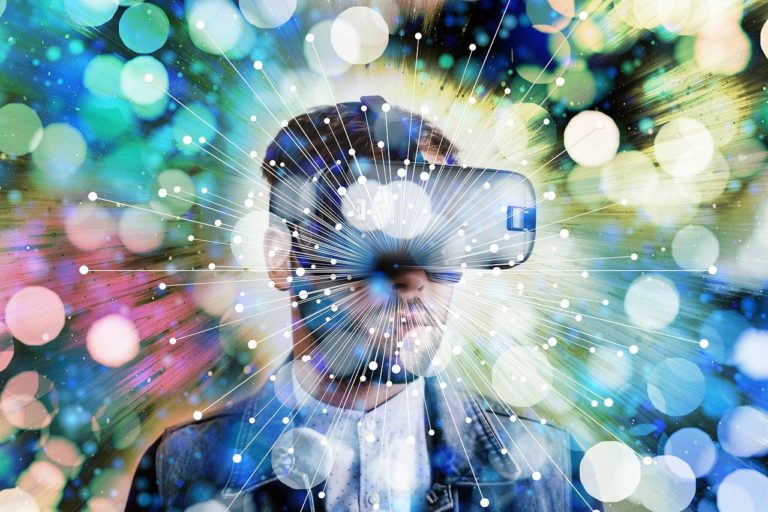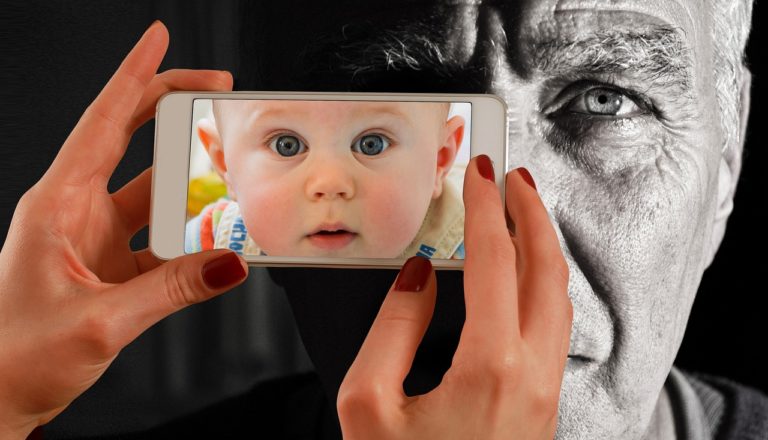Are you still living in the “real world“ or have you already entered the endless realm of virtual reality and even extended reality? Pointing out clearly what “reality“ sounds, looks and feels like has become tricky these days. Most of the time, you might not even have noticed that you are just applying VR and XR technology. However, there’s no need to worry as humans have escaped from their everyday lives and explored “new worlds“ for many centuries, both physically or in their mind. So VR and XR are just a new version of an old fascination – but what is the difference between all these types of technology? And which virtual travel roadmap fits your goals?

Experiencing and shaping XR – once they called it magic!
Breaking the limits of one’s experienced life reality has always been a basic human desire. From the beginning, people have told each other stories about Gods, heroes, magic and ghosts. In earlier centuries books, magical rituals and bonfire stories were most popular. These days, people try to enhance their perception and vision via meditation and lessons in mindfulness. The third option is to combine both – and the fourth one to assemble all this through technology, not magic. So, Virtual and Extended Reality, here we go – before philosophy takes over completely.
In general, exploration requires preparation. This is why the great explorers in human history depended on vehicles, teams, knowledge and equipment, e.g. a big and stable ship, a crew, reliable sea maps, provisions, tools, weapons and sailing skills. Although the memory of discovering exotic islands on a sea passage is nothing but nostalgic these days, there are certain parallels with the setup and discovery of virtual worlds.

What it takes to create and explore VR and XR worlds
1. You need knowledge and skills.
In order to create a VR and XR environment that functions and speaks to its visitors, you need to invest a lot. This includes a lot of planning (mind the “sea map“). But it also demands a lot of research and naturally a lot of programming knowledge, creativity, resource management, time, effort (or passion) for your project. Besides, you might face a lot of obstacles on your way – so resilience and a solution-oriented mindset are crucial “soft skills“, too!
2. You must apply and provide the right tools.
Before you start your exciting journey into virtual dimensions,you first know what you need to create them. In a software and hardware context, this simply means: a matching XR platform, software tools and apps and naturally the correct equipment for your project.
3. You have to believe in the power of team work (and find the right team).
Let’s be honest at this point – none of the great explorers in human history would have made it alone. Just because you can’t sail a big ship on your own! So team work is always essential when it comes to successful adventures. Furthermore, a crew always works best if everyone can contribute to the common goal with his or her talents, commitment and know-how.

4. You must know your goals.
Before you go on a travel, you must know where you’re going. Otherwise you might end up in a place that you didn’t want to see. Ironically, Columbus’ navigation error was still a great achievement at least for European settlers (not for the indigenous cultures, though).However, it is usually more efficient to achieve your goals without too many dangerous detours. For example, if you create a commercial XR product or solution for customers, target group research is crucial for your project. Only then you can satisfy both your target customers and your own bank account.
5. You should expect a long passage with joy and risks.
With every adventure, there’s a catch. Ideally, you might have factored everything that you could oversee when starting your project. Nonetheless, changes sometimes force you into experimenting or even into restarting from scratch. Always prepare yourself and your team for a longer and harder development journey than the “ideal way“ as trouble comes quickly. But in the end, the more you struggled for success, the more you’ll probably enjoy it and the more you’ll learn on your way.

Types of Extended and Virtual Reality (XR and VR)
In order to understand the system of Extended and Virtual Reality, one must consider that there are several types of them which serve different goals and target groups. The „Virtual Universe“ of XR and VR offers a number of possibilities. Depending on your information source, that either “Extended Reality“ (XR), “Virtual Reality” (VR) or both are the main categories in this sector. Based on this, you can add Virtual Reality as an individual specification, Mixed Reality (MR) and Augmented Reality (AR) in order to see the full picture. Each category and sub-category has its own goals, purposes and features. Additionally, most of them require specific equipment. Otherwise, you cannot dive into these virtual spaces. For your orientation, take a look at the different types below!
Extended Reality (XR)
A shoutout to everyone who knows and likes science fiction movies like „Surrogates“ … XR at our current technical standard is less intuitive and bound to a bunch of cables. No, you can’t just lay down in your full-body-suit and send your virtual surrogate to work or to the supermarket while looking perfect in daily life. In contrary, for most XR options, you usually need the following tools:
- your XR Headset which was either designed for AR, VR or MR user scenarios.
- a computer with a high-capacity graphic card and processor.
- motion controllers which are compatible with your XR headset.
- external tracking sensors, depending on your headset (optional).
- matching cables and adapters for your headset.
- AR Software for the overlay of virtual objects (only for AR scenarios).

Virtual Reality (VR)
Among all XR variations, Virtual Reality (VR) is probably the most “fictional“ one. VR leads the user into a virtual scenario, e.g. in video games for computers or play stations, and leaves out what happens around its borders. Thus VR has a great potential for anonymous escapism, but also for conscious “mind travels“ into any sort of alternative 3D reality. In order to work and play with VR, you need:
- your VR Headset, designed to immerse you in a virtual world.
- a powerful PC or Gaming Console with a graphics card which is compatible with the headset and renders virtual 3D environments.
- motion controllers depending on your headset and favourite VR platform;
- external tracking sensors, depending on your headset (optional).
- matching cables and adapters for your headset.
Augmented Reality (AR)
Augmented Reality is probably the most versatile option that you can choose within the XR spectrum. Here’s why: AR overlays your current environment with virtual objects and scenarios. One of the biggest advantages of AR is a relatively small array of equipment, at least in many cases. Using an AR headset, for example, is not always necessary. However, in order to be prepared for all AR scenarios, you need:
- an AR-enabled device, which can be a smartphone or tablet, smart glasses, or an AR headset.
- special AR Software, many apps work without any additional equipment.
- a camera in order to capture the real-world environment and overlay virtual objects on top of it.
- optional and common: motion and orientation sensors such as accelerometers and gyroscopes.
- also optional, but common: a stable internet Connection in order to dowload data during your AR experience.

Mixed Reality (MR)
Mixed Reality takes virtual interaction, which is also a part of Augmented Reality, to the next level. This most recent XR technology does not only overlay the user’s physical environment but blends both dimensions into one highly realistic scenario. XR with Mixed Reality is subtle enough to make people doubt on whether they are just facing their “everyday physical world“ or AI-generated VR scenarios. A MR is a very complex technology, you definitely need a lot of equipment. This includes:
- your Mixed Reality Headset combining both VR technology cameras and sensors with AR features.
- a powerful PC or laptop with a graphics card that is compatible with the MR headset and renders 3D virtual objects.
- motion controllers depending on your headset.
- tracking sensors to help map the physical environment (optional).
- matching cables and adapters for your mixed reality headset.
Potential costs and risks of XR and VR
Nothing comes without a price – and also XR technology doesn’t. First of all, there’s the financial aspect. The more advanced XR and VR equipment is, the more it costs. Depending on your budget and business branch you then might consider which XR “intensity“ and quality fits your target groups and business goals. Parallelly, you need to go for the correct equipment. By the way, your XR and VR strategy should also include maintenance costs and the workforce required for your projects. In the second place, you need to keep in mind that technology can fail.

So the more complex your private and professional IT infrastructure is, the higher the risk of facing general security issues, data privacy conflicts, data loss and hardware errors. Luckily, there is a lot of software on the market in order to repair and save video content. Just as a side note, our VideoRepairTool and MaxDataGenius are well-known players in this field, too. On a global level, security leaks in XR solutions can naturally invite people to misuse this complex and mighty technology branch for dangerous and destructive goals. This is why data security is the key to a “safer“ world in which virtual and analog realities can exist parallelly.
Are virtual realities with XR “the real deal“?
Without us recognizing it, XR, VR, MR and AR are already surrounding us wherever we use modern technology. Gamers around the world explore extremely complex virtual worlds either in VR or AR settings – which can be both a time-consuming and costly experience. Customers in online shops can place new furniture in virtual copies of their own apartment without even driving to a home centre. Museums and theme parks as well as cinemas lead us through impressive and magical VR worlds.
Even teenagers already know how to apply a beauty filter on TikTok and Instagram and AI creates artificial images which you can hardly distinguish from photos taken “on the spot“. Generally, we create and play an incredible number of smartphone apps with an XR background. Many of us just use this sort of technology more or less consciously on a daily basis – especially common AR tools which don’t need any extra equipment.

Applying XR mindfully (and sometimes taking a break)
The XR universe has become one of many possibilities to escape everyday life for a while. There are other useful purposes to enter it, though. We already pointed them out in our previous article on VR and AR. Some XR scenarios und solutions may even help us to accelerate changes for good. So we can make them support us to “save the world“. At least if we assume that technology does not fail in critical moments and that it is not misused as a “boomerang“ lashing back at its creators.
Last and least: We can excessively virtualize, extend, blend and overlay our living realities. Yet the basis we start from remains the “physical“ world which no technology can ever replace. This is the world we are born into, which we feel under our feet and breathe in and which allows us to go wireless. With this basic fact in mind, we’ll probably be fine with the magic, solutions and illusions we find in Extended and Virtual Reality.
